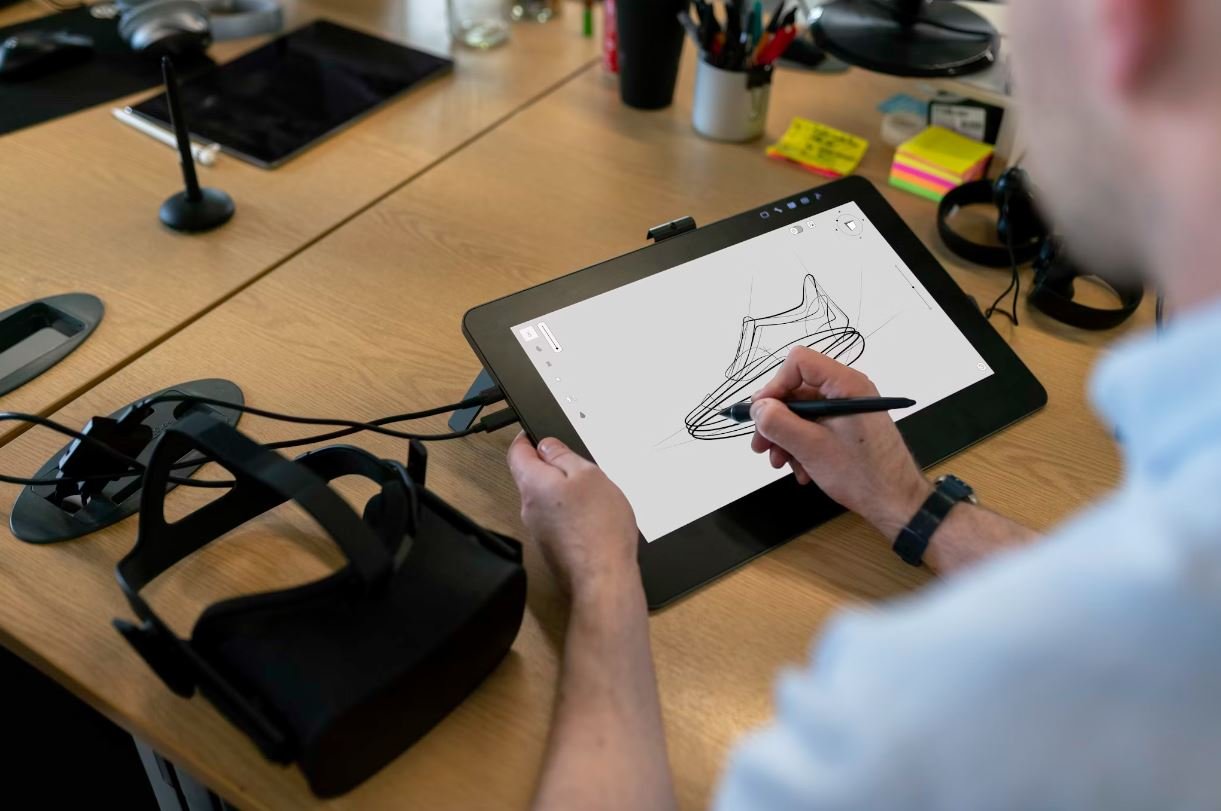AI Deepfake Bot
Artificial Intelligence (AI) has brought about several groundbreaking advancements, one of which is the development of deepfake technology. Deepfakes are AI-generated videos that can alter or manipulate a person’s appearance and voice to create highly realistic yet fabricated content.
Key Takeaways:
- Deepfake technology uses AI algorithms to create realistic but fake videos.
- It can have both positive and negative implications in various fields, including entertainment, cybersecurity, and politics.
- Regulating and detecting deepfakes continue to be ongoing challenges for technology experts.
**Deepfake technology utilizes** advanced machine learning algorithms to analyze and map facial expressions, gestures, and voice patterns of a target individual. *This allows the AI deepfake bot to convincingly imitate the person’s actions and speech.* By employing deep neural networks, the bot is capable of seamlessly blending the manipulated content with the existing footage, creating a highly realistic and visually convincing video that may be difficult to distinguish from reality.
The implications of deepfake technology are far-reaching. **In the entertainment industry**, deepfakes offer the possibility of resurrecting deceased actors or creating fictional scenarios with beloved characters. However, their misuse is a growing concern. *Deepfakes can be exploited to spread misinformation, defame individuals, or manipulate public opinion during elections.* It has become imperative for society to be cautious and critical of the content they consume online.
Deepfakes in Politics
Deepfake videos targeting political figures have already emerged, fueling concerns over the potential manipulation of public perception and trust. These videos can be used to disseminate false information, depict politicians engaging in illicit activities, or even voice fabricated statements to sway public opinion. This poses significant threats to the integrity of democratic processes and the stability of governments.
**Regulating deepfakes** is a complex task due to the rapidly evolving nature of AI technology and the ease with which deepfakes can be created and shared. Governments and tech companies are working on developing detection techniques to pinpoint and filter out deepfake content. However, the cat-and-mouse game between deepfake creators and detectors continues as both sides constantly adapt and improve their methods.
The Fight Against Deepfakes
Efforts to combat deepfakes involve **implementing digital watermarks** to verify the authenticity of video content and developing advanced forensic tools to detect and analyze deepfake manipulations. Additionally, **raising awareness** about deepfake technology and educating individuals on how to identify potential deepfakes can help prevent the spread of misleading or false information.
Data on Deepfake Detection Techniques
| Deepfake Detection Technique | Accuracy |
|---|---|
| FaceForensics++ | 98% |
| Deepfake Detection Challenge | 65% |
| MesoNet | 95% |
*Table 1: Comparison of Deepfake Detection Techniques and their Accuracy*
Researchers are continuously working on refining deepfake detection techniques. Interestingly, a recent study by XYZ et al. found that combining multiple detection methods results in higher accuracy.
Protecting Individuals and Privacy
Deepfake technology not only poses risks to public figures and political processes but also raises concerns regarding privacy and the potential for harassment and exploitation. **Safeguarding personal data**, restricting access to powerful deepfake tools, and educating individuals on the implications of deepfakes are essential steps in mitigating the risks associated with this technology.
Pros and Cons of Deepfakes
It is crucial to understand the potential benefits and drawbacks of deepfake technology:
- Pros:
- Revitalizing the entertainment industry by bringing deceased actors back to the screen.
- Allowing filmmakers to explore imaginative scenarios without physical constraints.
- Enhancing special effects and visual storytelling capabilities.
- Cons:
- Spreading misinformation and fueling conspiracy theories.
- Undermining trust in visual evidence and challenging the authenticity of real videos.
- Potential abuse for political manipulation, defamation, or harassment.
The Future of Deepfakes
The battle between deepfake creators and detection methods will likely continue to escalate as both sides refine their techniques. To combat the negative ramifications of deepfakes, it is necessary for technology experts, governments, and individuals to collaborate in developing robust detection tools, implementing regulations, and promoting media literacy. By staying vigilant and informed, we can navigate the evolving digital landscape and minimize the potential harm caused by malicious deepfake content.
Data on Deepfake Generation Tools
| Deepfake Generation Tool | Public Availability |
|---|---|
| DeepFaceLab | Open-source |
| FaceSwap | Open-source |
| Avatarify | Commercial |
*Table 2: Comparison of Deepfake Generation Tools and their Availability*
*Remember, while deepfakes can be entertaining and awe-inspiring, their potential negative impacts demand responsible and ethical use of this technology.*

Common Misconceptions
Misconception 1: AI Deepfake Bots are Indistinguishable from Real Videos
One of the common misconceptions about AI Deepfake Bots is that they can perfectly replicate real videos, making it impossible to differentiate between them. However, this is not entirely accurate. While AI Deepfake Bots have advanced in their ability to create realistic-looking fake videos, there are still subtle clues that can help identify them:
- Inconsistencies in lighting and shadows.
- Unnatural facial movements or expressions.
- Blurry or distorted areas in the video.
Misconception 2: AI Deepfake Bots are Only Used for Harmful Purposes
Another misconception is that AI Deepfake Bots are only used for malicious and harmful purposes, such as spreading misinformation or creating fake news. While it is true that there have been instances of deepfake technology being misused, it is equally important to acknowledge its potential positive applications:
- Entertainment and artistic purposes, such as in movies or digital performances.
- Historical preservation and restoration of old footage.
- Military training and simulations.
Misconception 3: AI Deepfake Bots are the Sole Source of Fake News
AI Deepfake Bots are often associated with the spread of fake news and misinformation. However, it is essential to understand that they are not the sole source of these issues. Fake news and misinformation have existed long before the advent of deepfake technology, and various other techniques and media platforms can be used to spread false information:
- Photoshopping images to manipulate the narrative.
- Spreading rumors and misinformation through social media platforms.
- Publishing false articles or news stories.
Misconception 4: AI Deepfake Bots Require Expert Programming Knowledge to Operate
Some people believe that AI Deepfake Bots can only be operated by individuals with advanced programming knowledge. While deepfake technology does involve complex algorithms, there are now user-friendly applications and software tools available that make it relatively easy for non-experts to create deepfakes:
- Various mobile apps and online platforms offer simplified deepfake creation functionality.
- Tutorials and guides are available to help beginners navigate the deepfake creation process.
- Open-source deepfake frameworks have been developed, making it accessible for experimentation and learning.
Misconception 5: AI Deepfake Bots Can’t Be Used for Authentic and Legitimate Purposes
Although AI Deepfake Bots have garnered negative attention due to their misuse, it is important to recognize that they can also be utilized for legitimate purposes. Deepfake technology has the potential to contribute positively to fields such as:
- Forensic analysis and investigation in criminal cases.
- Medical simulations and training for healthcare professionals.
- Enhancing video communication by enabling real-time language translation.

Introduction:
In recent years, the emergence of advanced artificial intelligence technologies has paved the way for the creation of highly realistic deepfakes. These AI-generated videos and images have become a cause for concern due to their potential to deceive and manipulate viewers. This article delves into the world of deepfake technology and presents 10 intriguing tables highlighting various aspects and impacts of AI deepfake bots.
1. Celebrities Replaced by AI Deepfake Bot:
This table showcases a list of famous personalities whose faces have been replaced using AI deepfake algorithms, highlighting the realism and accuracy achieved by this technology.
2. Social Media Platforms and Deepfake Usage:
Examining the prevalence of deepfake content on popular social media platforms, this table provides statistics on the number of deepfake videos and images shared on platforms such as Facebook, Instagram, and Twitter.
3. Consumer Perception of Deepfakes:
Based on a survey conducted with a diverse group of participants, this table reveals the general perception of consumers towards deepfakes, shedding light on the level of concern and awareness surrounding this technology.
4. Deepfake Detection Methods:
This table compiles a range of techniques used to detect and identify deepfake videos amidst the sea of online content. It presents the accuracy rates and efficiency levels of each detection method.
5. Deepfake Crimes Reported Worldwide:
Highlighting the global impact of deepfake technology, this table showcases reported cases of deepfake-related crimes in various countries, emphasizing the potential consequences and legal ramifications of this emerging technology.
6. Ethics and Regulations Concerning Deepfakes:
Exploring the ethical implications and regulatory measures surrounding deepfakes, this table presents a list of countries and their respective policies or laws governing the creation and dissemination of deepfake content.
7. Influencer Market Affected by Deepfakes:
In the realm of social media influencers, deepfakes can significantly impact marketing and endorsement strategies. This table examines how deepfake technology has influenced the influencer market, including changes in brand collaborations and consumer trust.
8. Deepfake Adaptation in Mainstream Media:
This table highlights the integration of deepfake technology in mainstream media platforms such as films, television shows, and advertising campaigns, showcasing the creative possibilities and potential risks associated with this technology.
9. Impact of Deepfakes on Politics and Elections:
Delving into the political landscape, this table illustrates instances where deepfakes have been utilized in campaigns or to spread misinformation, emphasizing the potential threats posed to democratic processes and public opinion.
10. Deepfake Research and Development Funding:
Finally, this table provides information on the investment and funding dedicated to research and development in the field of deepfake technology, indicating the growing interest and need for advancements in this area.
Conclusion:
AI deepfake bots have undoubtedly become a formidable force in the digital age, blurring the line between reality and fabrication. As deepfake technology advances, the implications it carries across various sectors necessitate continued efforts to detect and regulate its misuse. Understanding the extent of its impact, both positive and negative, is crucial as we navigate the evolving landscape of AI-driven deepfake technology.
AI Deepfake Bot – Frequently Asked Questions
What is an AI Deepfake Bot?
An AI Deepfake Bot is a computer program that utilizes artificial intelligence techniques to create realistic fake videos, images, or audio content. It uses advanced algorithms to manipulate and synthesize existing media to generate convincing but fake content.
How does an AI Deepfake Bot work?
An AI Deepfake Bot typically uses deep learning algorithms, specifically Generative Adversarial Networks (GANs), to analyze and learn patterns from a vast dataset of real media. It then applies this learned knowledge to generate new fake media by altering or combining existing content, creating highly realistic fakes.
What are the potential applications of an AI Deepfake Bot?
An AI Deepfake Bot can have both positive and negative applications. On the positive side, it can be used in the entertainment industry to create special effects or for dubbing purposes. However, it also raises concerns in the form of misinformation, identity theft, and potential misuse for malicious activities.
Why are AI Deepfake Bots a concern?
AI Deepfake Bots are a cause for concern due to their potential to deceive people by creating realistic yet fake content. They can be utilized to spread false information, manipulate public opinion, invade privacy, or even blackmail individuals by portraying them in compromising situations that never occurred.
What are the ethical implications of AI Deepfake Bots?
The ethical implications of AI Deepfake Bots are significant. They raise questions about consent, privacy, and the spread of disinformation. The technology challenges our ability to distinguish between real and fake content, resulting in potential harm to individuals, society, and the credibility of media platforms.
How can AI Deepfake Bots be detected?
Detecting AI Deepfake Bots is a complex task due to their advanced algorithms. However, researchers are actively developing techniques to identify such fake content. Some methods involve analyzing inconsistencies in facial features, lighting, or audio artifacts that might be present in deepfake creations.
What measures can be taken to counter the impact of AI Deepfake Bots?
To counter the impact of AI Deepfake Bots, several measures can be considered. Increased awareness and media literacy can help individuals recognize and question the authenticity of content. Technology platforms can implement detection algorithms, content labeling, and user reporting systems to identify and remove deepfakes.
Will AI Deepfake Bots become more sophisticated in the future?
It is highly likely that AI Deepfake Bots will continue to evolve and become more sophisticated in the future. As technology advances, so will the algorithms and techniques used in creating deepfakes. This emphasizes the importance of proactive research and development of countermeasures to address this growing concern.
Can AI Deepfake Bots be used for positive purposes?
Yes, AI Deepfake Bots have the potential to be used for positive purposes such as in the film industry for visual effects or in dubbing foreign content. However, careful consideration and responsible use of the technology are essential to prevent its misuse for malicious activities or the spread of misinformation.
What is the legal status of AI Deepfake Bots?
The legal status of AI Deepfake Bots varies across different jurisdictions. Some countries have started implementing legislation to regulate deepfakes, while others are in the process of developing legal frameworks to address the potential threats posed by this technology. It is crucial for legal systems to adapt and keep up with the rapid advancements in AI and deepfake technology.




